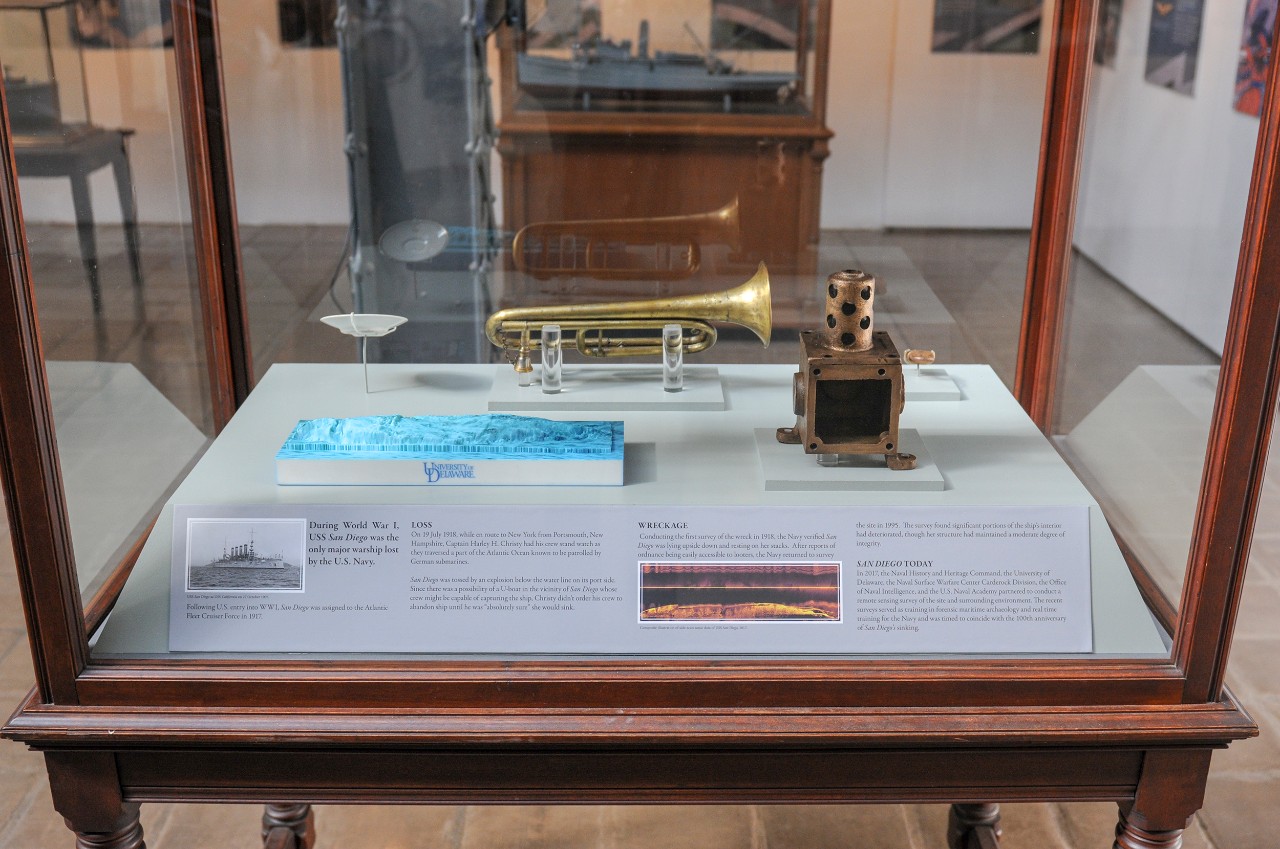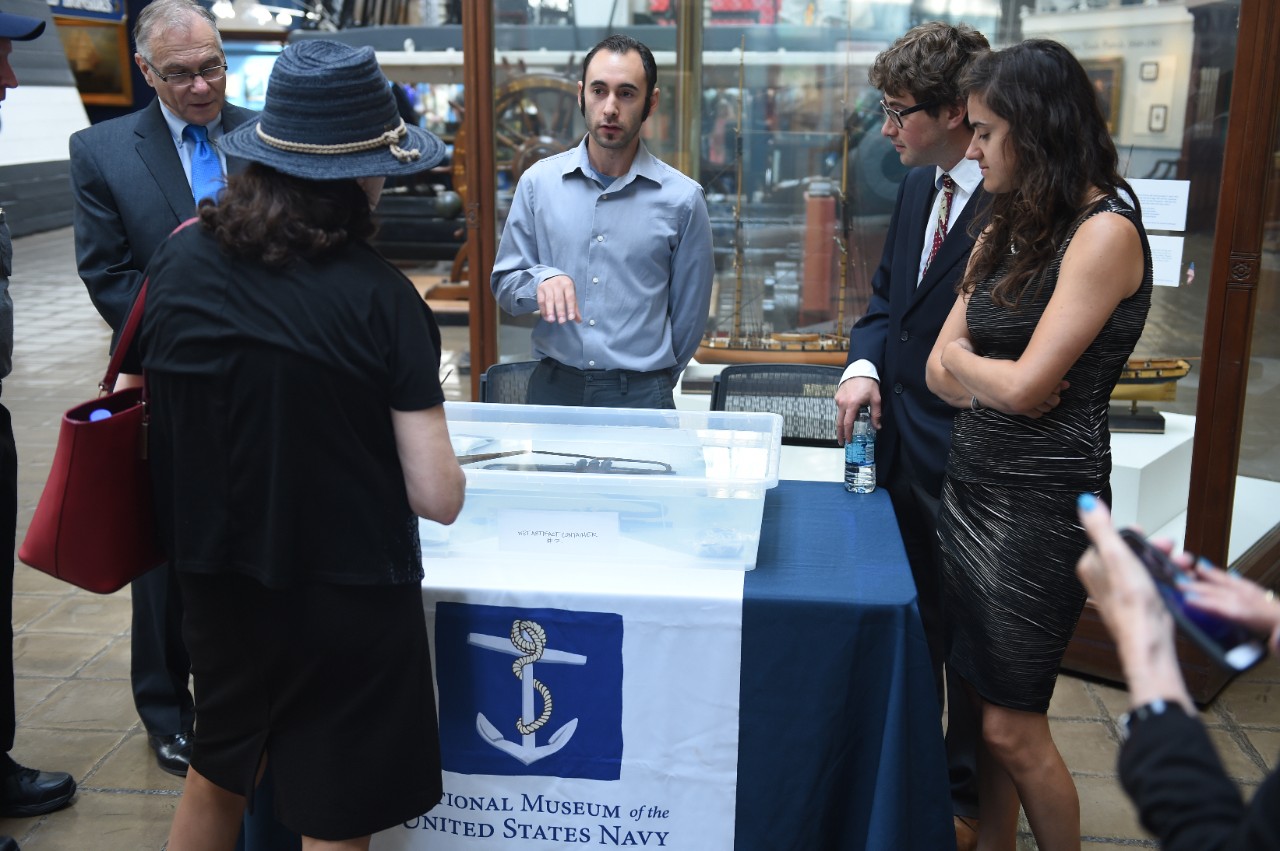Why Conserve Navy's Underwater Heritage
Artifacts provide a tangible way for people to connect with history and highlight different, and often unrecorded, aspects of the lives of past people, from the exceptional moments to the everyday. The Naval History and Heritage Command (NHHC) is charged with collecting, studying, and preserving artifacts that help tell the story of the U.S. Navy and the American Sailor. The role of the Underwater Archaeology Branch (UA) is to care for the Navy’s submerged cultural resources, as well as archaeological material from sunken and terrestrial military craft sites.
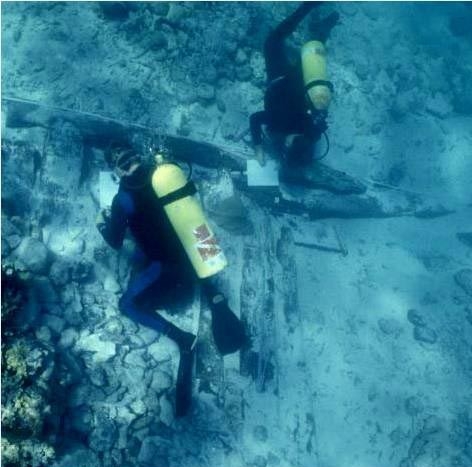
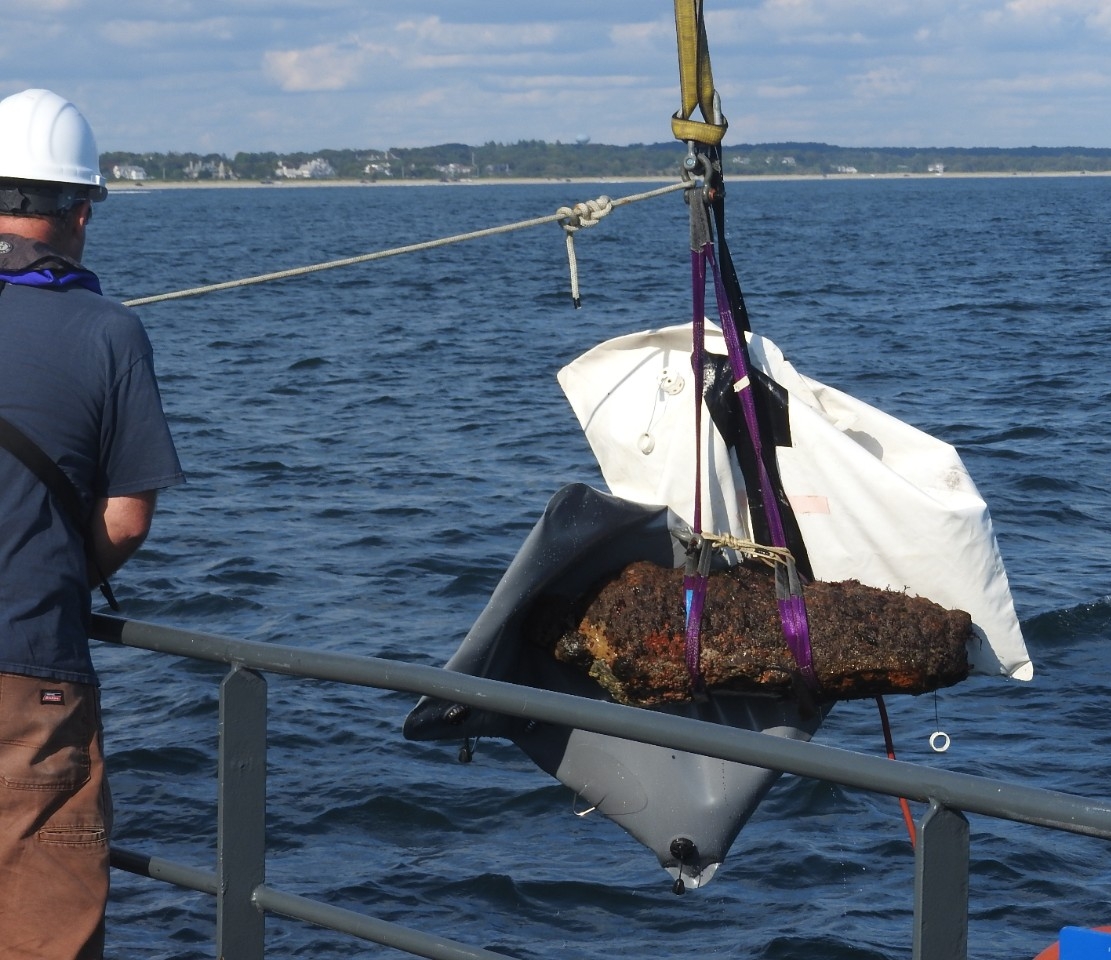
Artifacts from the Sea
All artifacts in the Navy’s collection are closely monitored and, over time, most require some form of conservation treatment in order to preserve the artifact for as long as possible. Unlike objects that have been passed down through generations and cared for, archaeological material has been left exposed to adverse conditions for many years and may have deteriorated significantly as a result. Archaeological conservation is devoted to the preservation of excavated artifacts, structures, and sites from both terrestrial and maritime environments to ensure long-term stabilization of these materials for future study and display.
For underwater archaeology, conservation plays an important part since artifacts from submerged sites require specialized and often rapid care. When a ship or aircraft sinks, all the materials on board begin to interact with their new environment – even the parts that are designed to be in water (e.g. the hull of a submarine) are not normally submerged indefinitely and require frequent maintenance. While the initial chemical reactions and changes to an object when first submerged in water, especially salt water, are fast acting, over time the object reaches a point of equilibrium with its new environment and degradation of the artifact slows. The condition and level of preservation of an artifact from underwater can depend on its environment (oxygen free, quick burial, low water temperature, and darkness), the amount of time submerged, how it was recovered, if it was allowed to dry out before treatment, the material makeup (wood, iron, brass, ceramic, or a combination of these materials), and more.
When an artifact is recovered from a submerged environment, it is exposed to increased oxygen, light, temperature, and other external conditions, which can quickly lead to signs of degradation if prompt action is not taken. A tenet of conservation, like archaeology, is careful and detailed documentation since, if not conducted properly, the treatment can be just as destructive or damaging to the artifact as no treatment at all. So, it is in the best interest of the artifact that it is cared for by trained professionals such as archaeological conservators. The UA established the Archaeology & Conservation Laboratory (ACL) to provide the necessary staff and facilities to conserve Navy’s submerged history. Dive in to learn what it takes to conserve an artifact from underwater and why each step is important!
First Contact
The ACL, located at NHHC Headquarters in Washington, DC, receives artifacts in a variety of ways and conditions. Ideally, an artifact is recovered during an archaeological investigation conducted either by UA staff, a project partner, or by a third party via the permitting program. However, a large portion of UA’s artifact collection is derived from federal mitigation projects and artifacts removed without authorization and returned to UA voluntarily or recovered by federal agents. Regardless of how an artifact arrives at the ACL, the conservation process begins with an initial artifact assessment and full documentation, followed by scientific analysis, historical and archival research, conservation treatment, and ending with a final documentation.
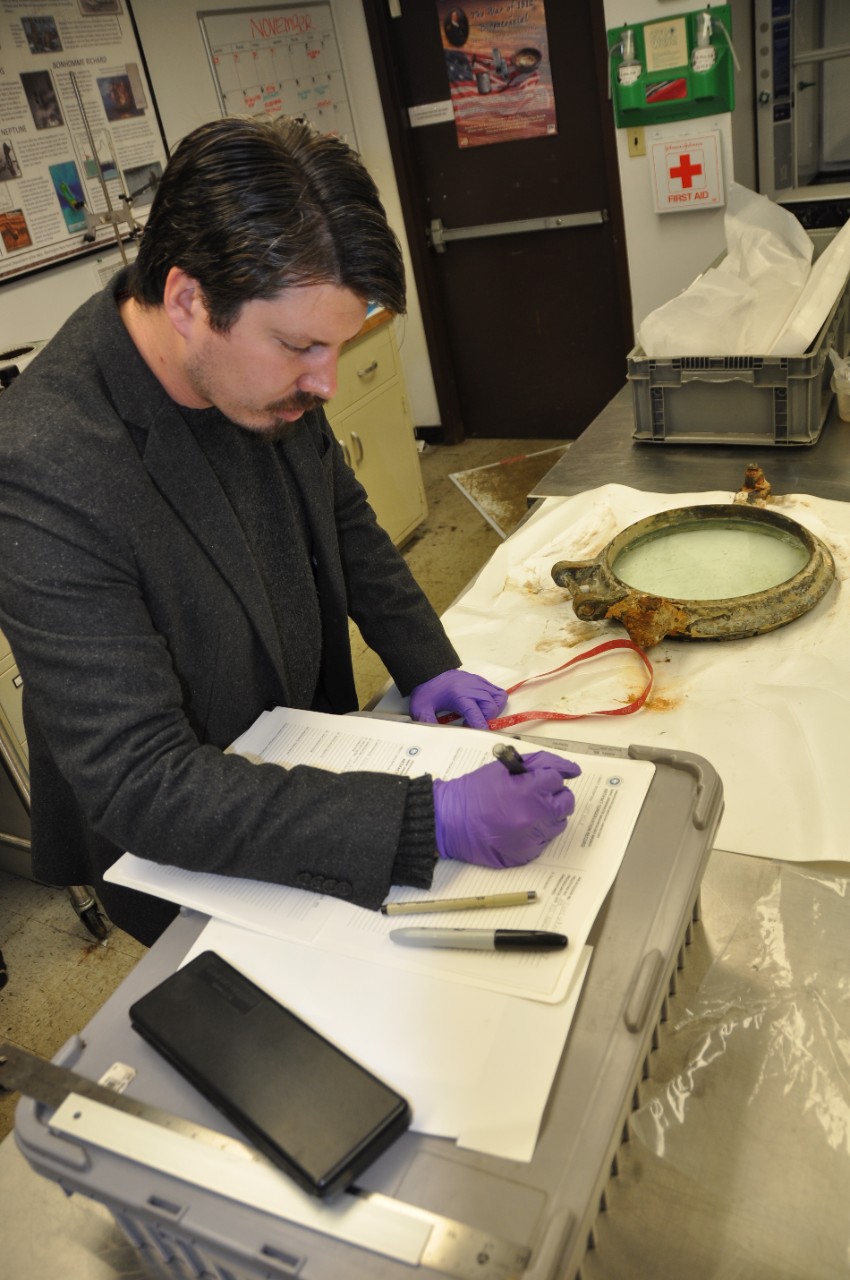
Without a conservation plan and funding to complete all steps of the process, most artifacts will succumb to irreversible damage and important historic data, such as maker’s marks or inscriptions, will be lost. An archaeological conservator’s job is to make sure this does not happen! Artifacts recovered from a submerged environment must stay wet until a proper conservation treatment can be planned. If this step is not taken, the artifacts will dry out causing permanent harm; for example, waterlogged wood will shrink and warp, losing its structural integrity. Unfortunately, artifacts not recovered as part of an archaeological investigation often arrive at the lab already dry and conservators must do their best to mitigate any issues that this might have caused. Sometimes this involves re-submerging the artifact in water, other times keeping it dry is safer. Determining the proper treatment is crucial because using certain cleaning methods or chemicals could be too harsh or improper for the material type, causing significant deterioration or loss.
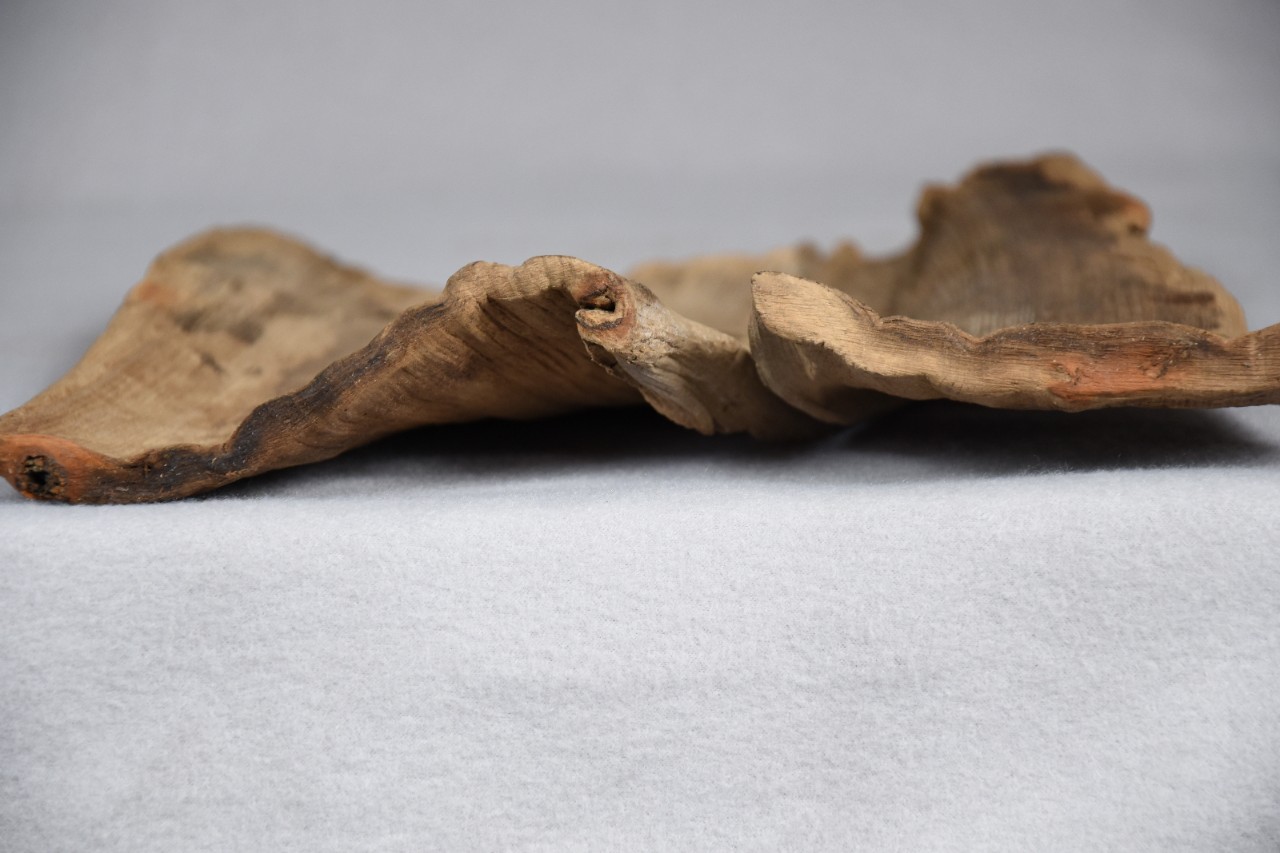
When an artifact is received, conservators first take detailed documentation and photographs, noting its weight, measurements, description, and condition. During this time, any scientific analysis, such as X-radiography (X-ray) and Fourier Transform Infrared Spectroscopy (FTIR) are conducted to provide clues to identifying an artifact’s material makeup, corrosion products, surface details, types of coatings, and much more. The next step involves the removal of any soluble salts from the artifact, also known as desalination.
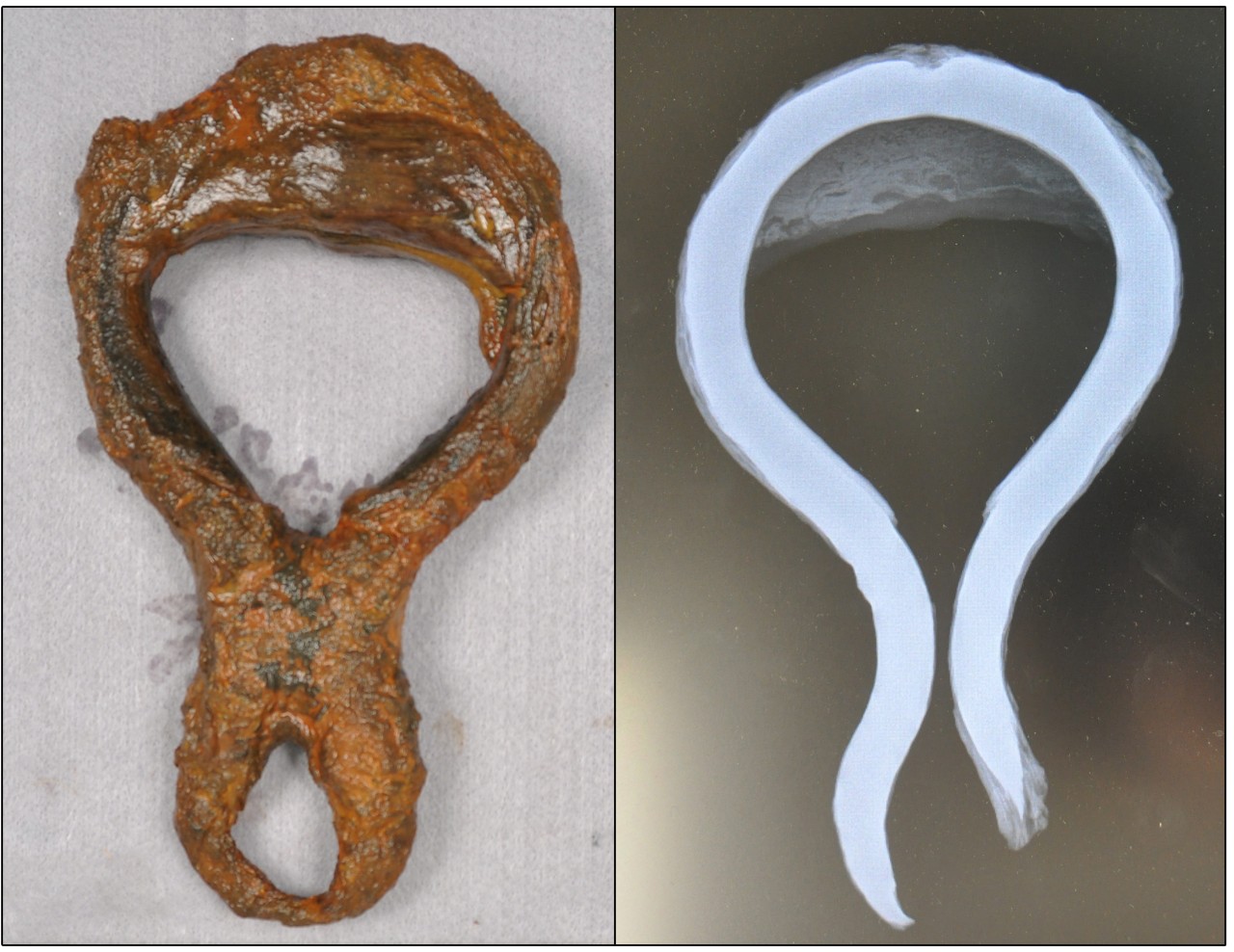
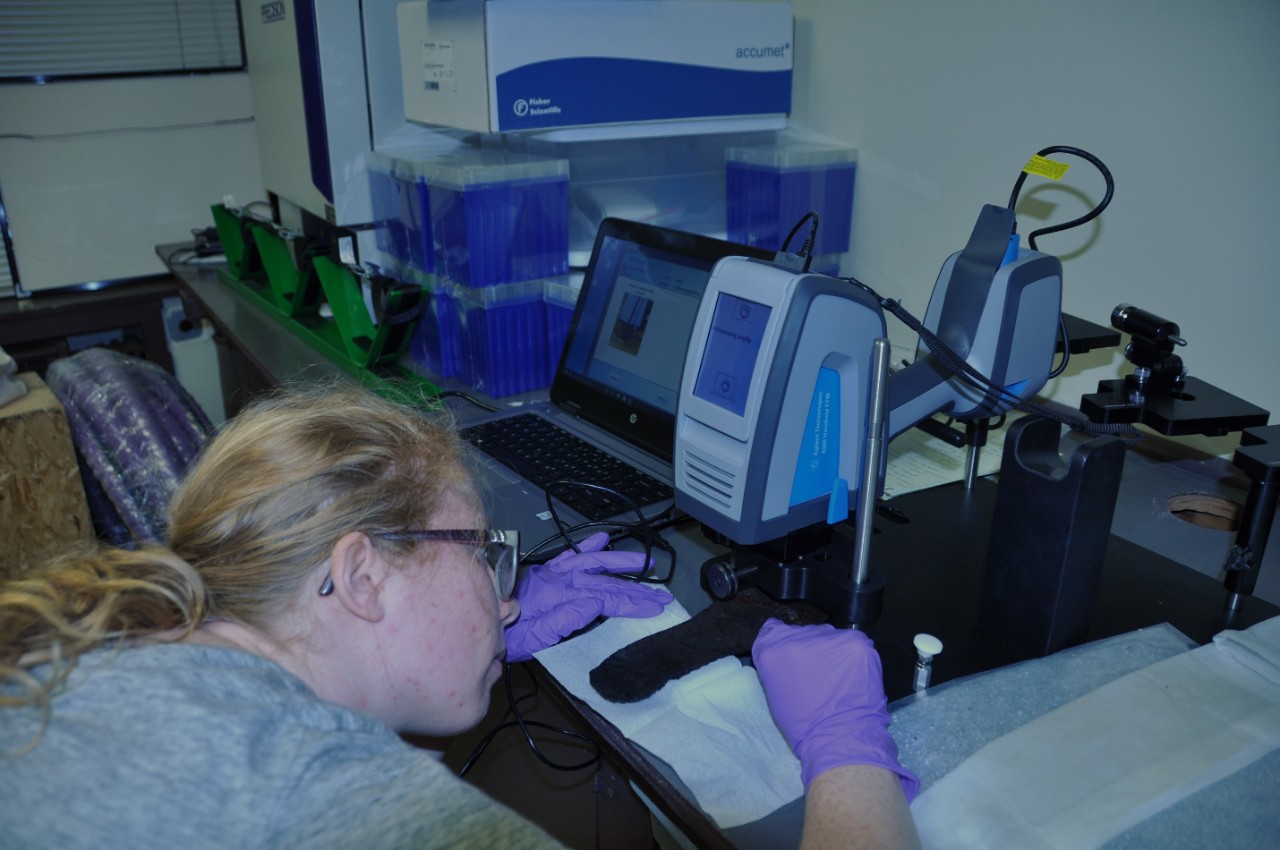
Removing the Salts
Soluble salt (chlorides) removal is crucial to ensure that chloride-triggered corrosion does not occur after treatment. While submerged in water, sometimes even in freshwater rivers and lakes, chlorides dissolved in the water seep deep inside the artifact’s material structure at a microscopic level. Since salt expands as it dries, as well as contributes to other corrosive activity, these must be removed before the artifact is considered stable. Conservators will regularly monitor the chloride levels in solution during this phase to know exactly how much salt is being removed. This process can take months to years depending on the artifact’s size, material, and its past environmental conditions. If this step is not taken or completed, future corrosion and surface damage can occur, prompting re-treatment.
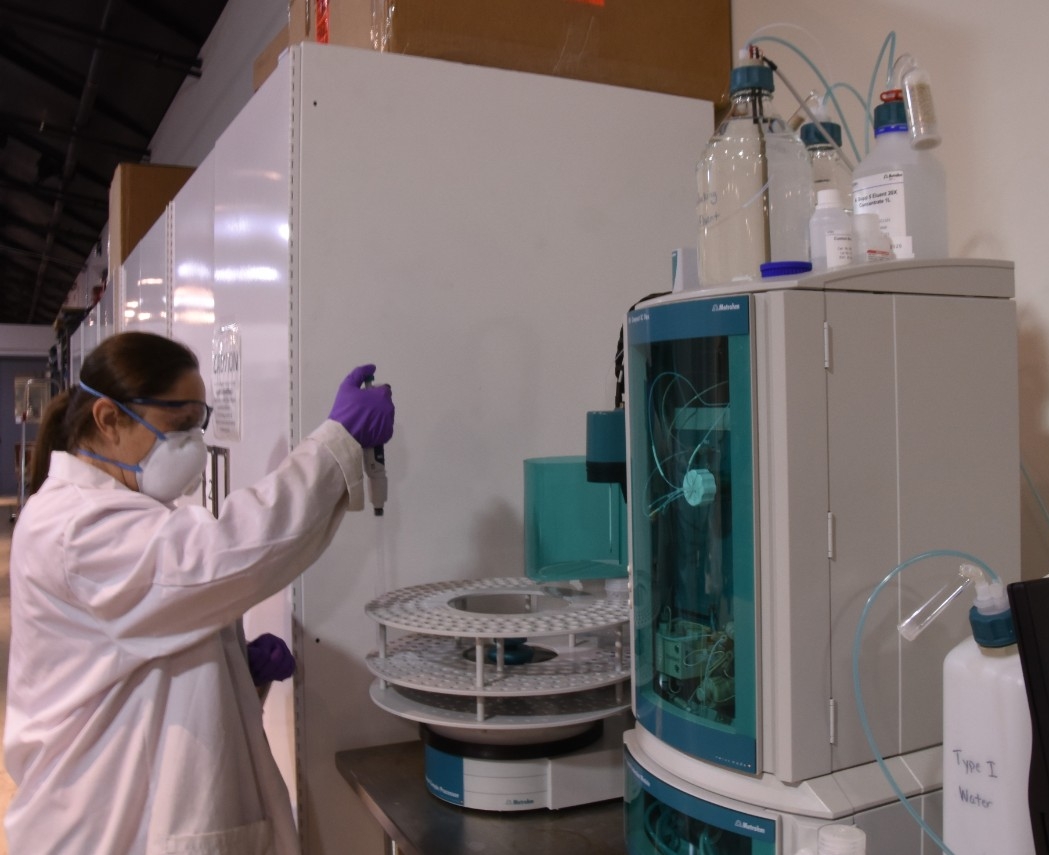
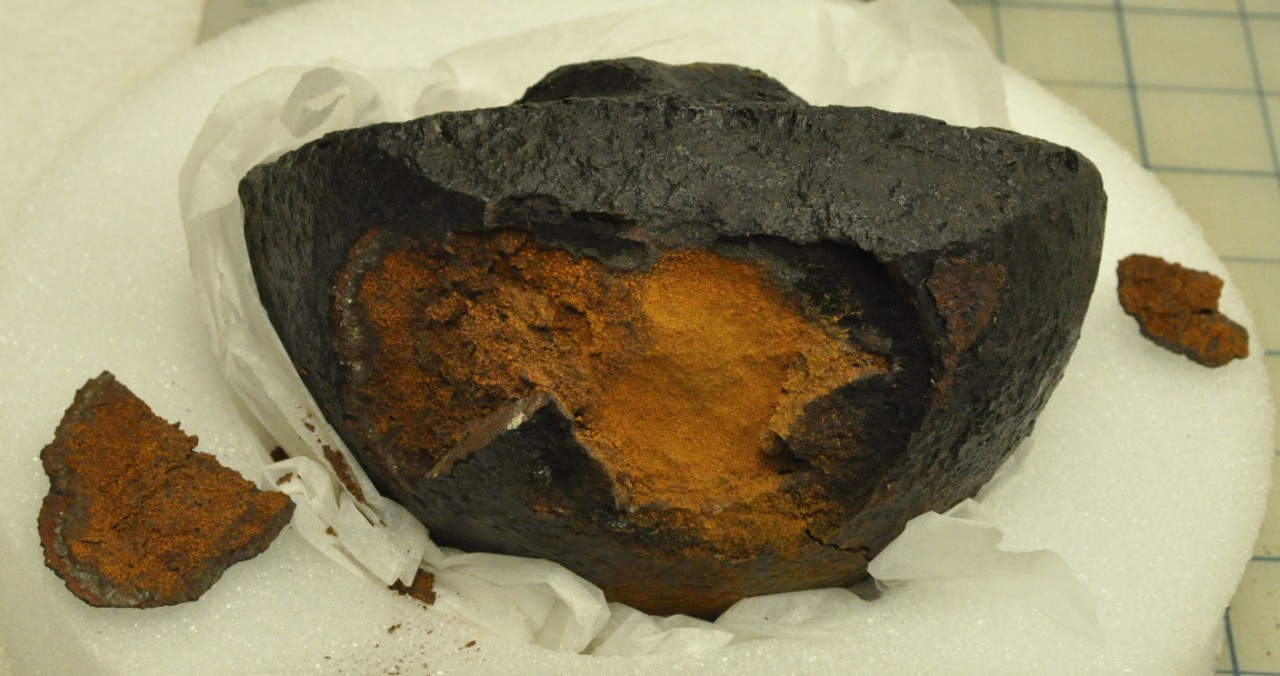
Solutions used during desalination are guided by the material of the artifact. Organic materials like wood or leather are placed in either tap water or deionized water (DI), while metals like iron or brass are placed in alkaline solutions with a higher pH level (between 9 and 14). For metals that have a solid metal core, electrolytic reduction (known as ER) can be applied. This is a process performed by placing the artifact in alkaline solution and surrounding it with metal steel plates. A low-amperage electrical current is connected with a negative charge going to the artifact and a positive charge going to the steel plates. The negative current going through the artifact repels the negatively charged chlorides while the positive-charged steel plates attract the chlorides into the solution.
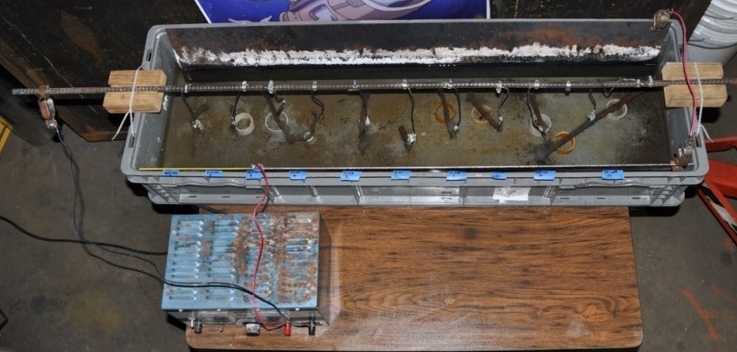
Mechanical Cleaning
During the desalination process, conservators can begin mechanical cleaning. Artifacts recovered from a marine environment are often covered in thick layers of hard material know as concretion. This is formed over time as the artifact corrodes and the corrosion products interact with sediment, marine life, and other particulate in the water, building up rock like layers that encase the artifact. This phenomenon primarily affects iron-based metal artifacts, but nearby objects of other materials can get caught up in the concretion as well. Concretions often look just like rocks underwater, but archaeologists are trained to recognize or collect items that could be a concretion out of an abundance of caution. Once in the lab, during documentation and analysis, the object is x-rayed to determine if it is a concretion or natural material, and what type of object may be inside.
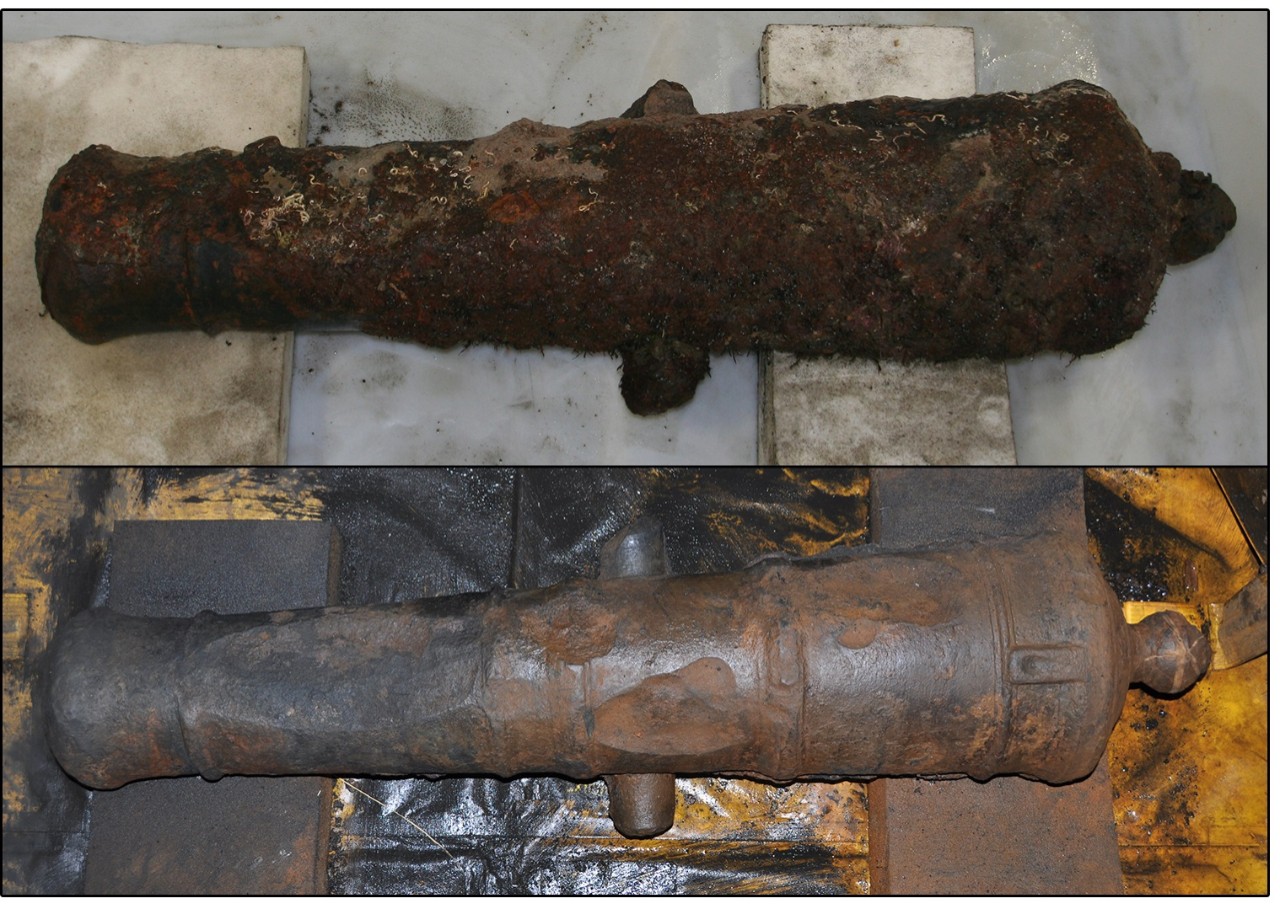
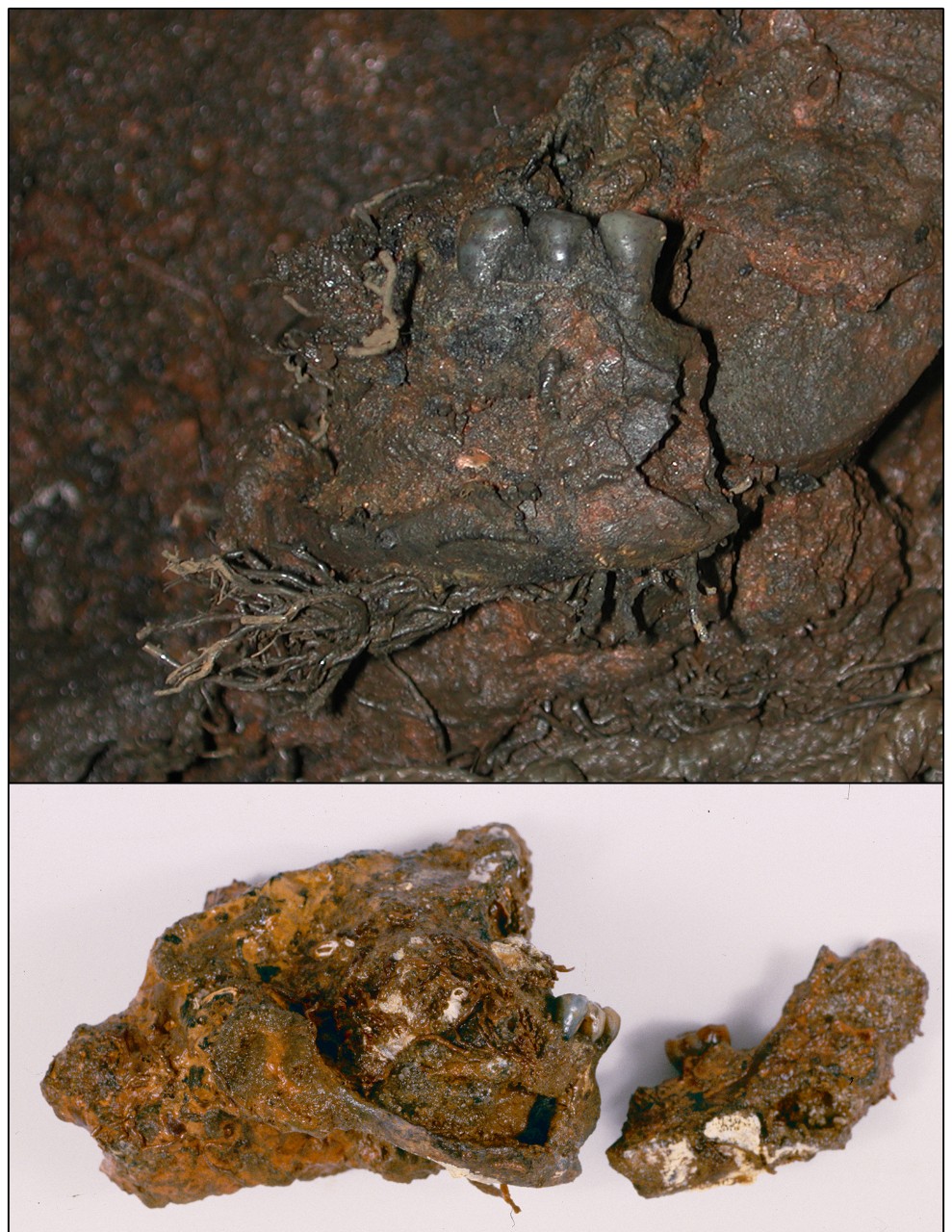
Conservators frequently use small pneumatic tools called air scribes to remove concretions. Proceeding slowly and carefully, layer by layer without harming the artifact surface or any other artifacts within the concretion layer, conservators deconcrete the artifact. Other cleaning implements are used, such as dental picks and scalpels, but it depends on what the artifact is made of and what is being removed to determine the best tool to use. For example, compacted soil on wood can be removed using wooden picks, cotton swaps, and a soft bristle brush, but not a scalpel or dental pick because of the wood’s soft surface.
In some cases, a concretion is all that is left of the artifact. The metal has completely eroded away leaving an empty cavern inside in the shape of the artifact. A conservator can create a small hole in the concretion and fill the void with a liquid material called epoxy that, once hardened, will take on the shape of the original artifact and the concretion can then be removed.
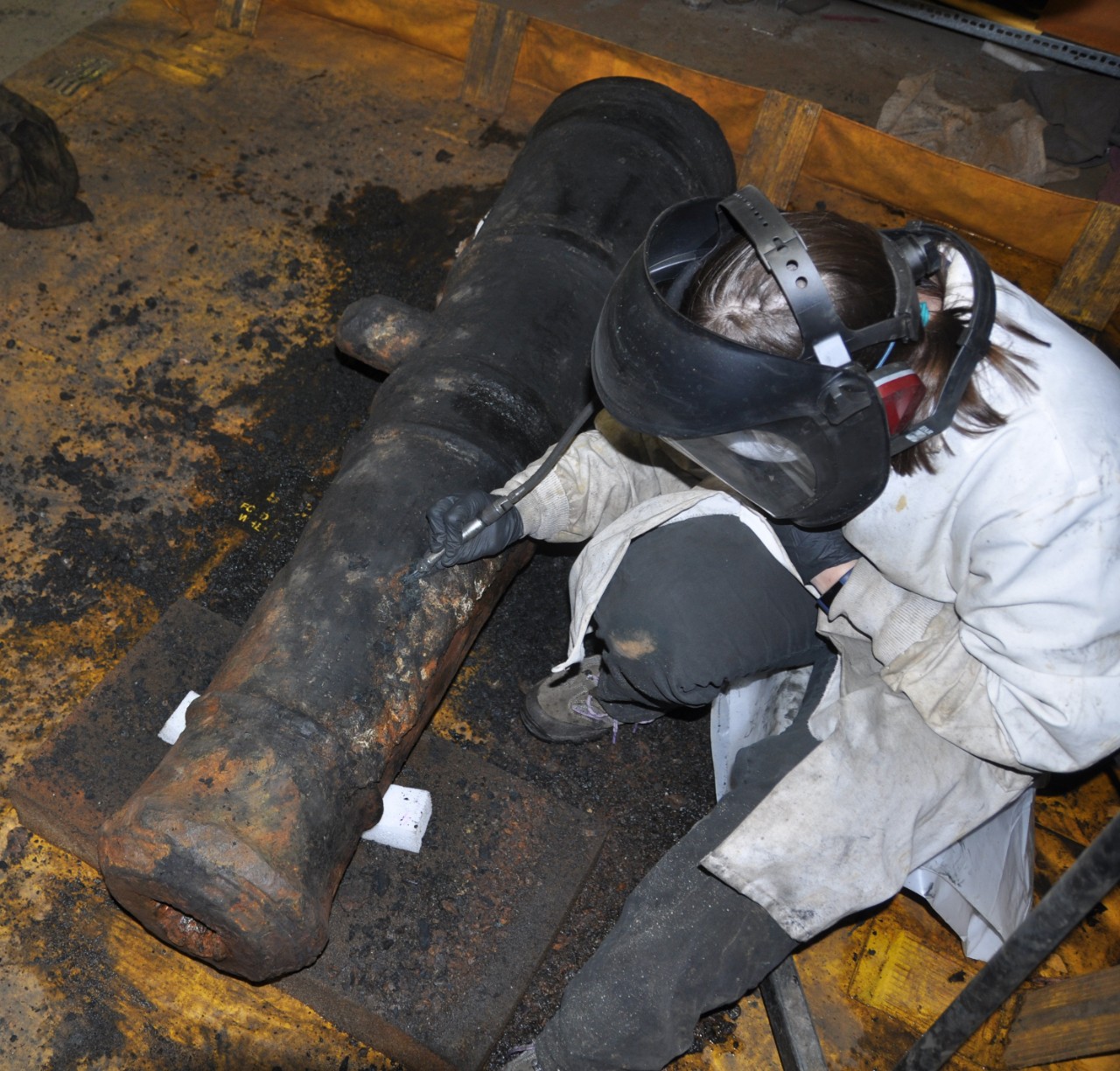
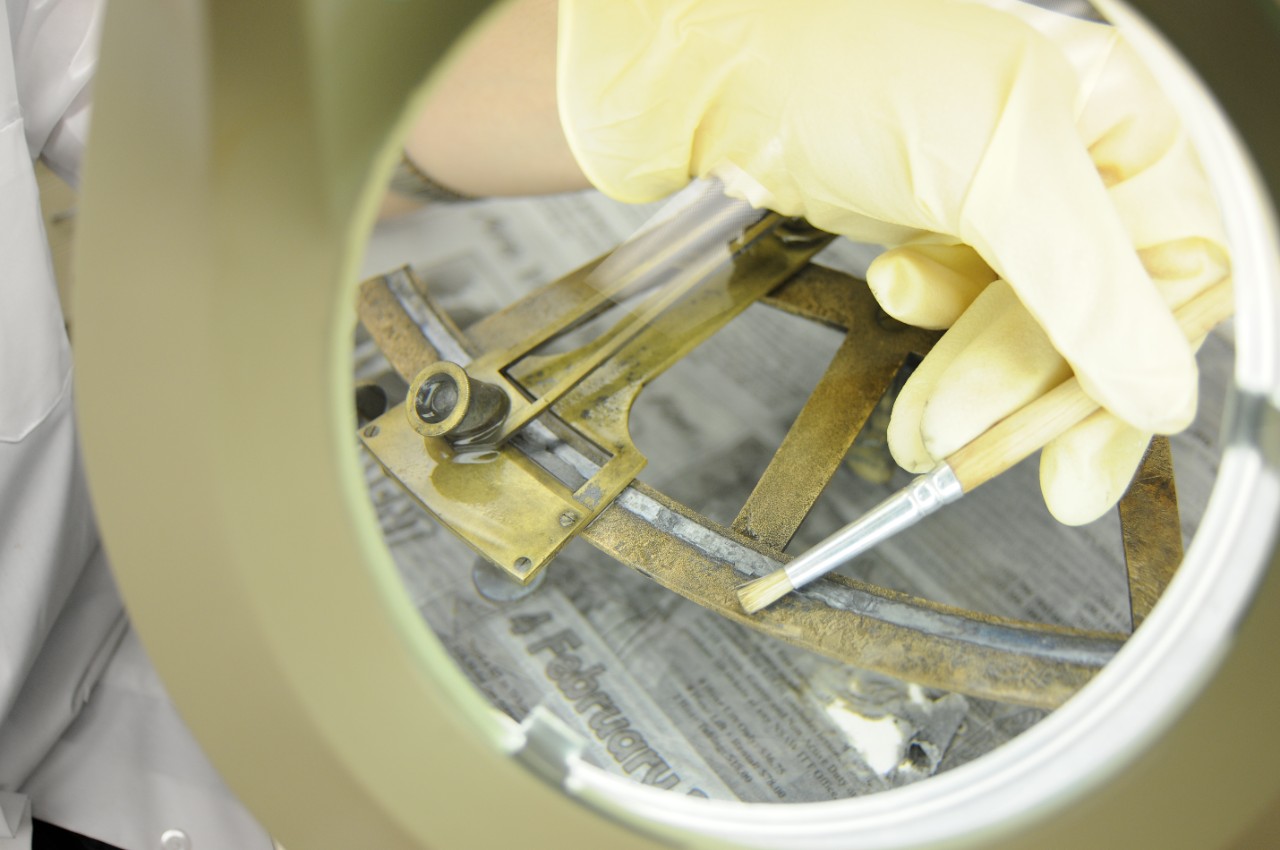
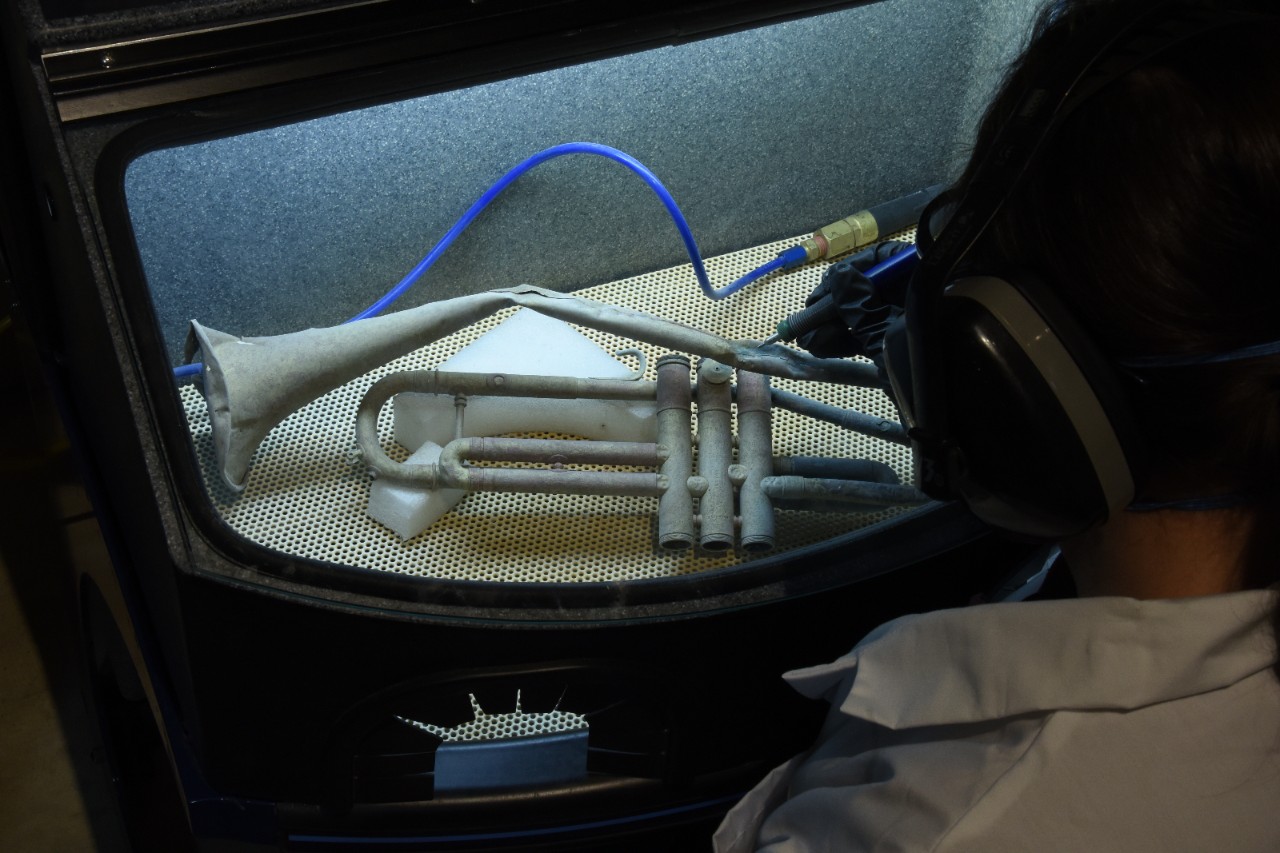
Tailoring the Treatment
The next few phases of the conservation process are customized for each artifact based on what it is made of, and whether it consists of a single material or multiple (known as a composite artifact). Each material has a different conservation process to follow to ensure its structural stability. It is important to know and understand each material and how it responds to different chemicals or treatment processes. If not, the artifact will begin to react negatively, causing adverse consequences that can lead to the loss of important information or compromise the integrity of the artifact as a whole.
Textiles and paper are usually the most compromised by being in an underwater environment and can be difficult to conserve, as even simply moving them can destroy them. Wood and leather can survive well in certain situations, particularly if they become buried in sediment quickly, preventing marine organisms and oxygen from harming them. Metals are subject to corrosion, particularly iron, but copper and nobler metals can survive well and may require less intervention from conservators. Glass and high-fired ceramics often fare the best among underwater artifacts, but still require desalination and controlled drying. Sometimes composite artifacts need to be disassembled in order to treat different components separately.
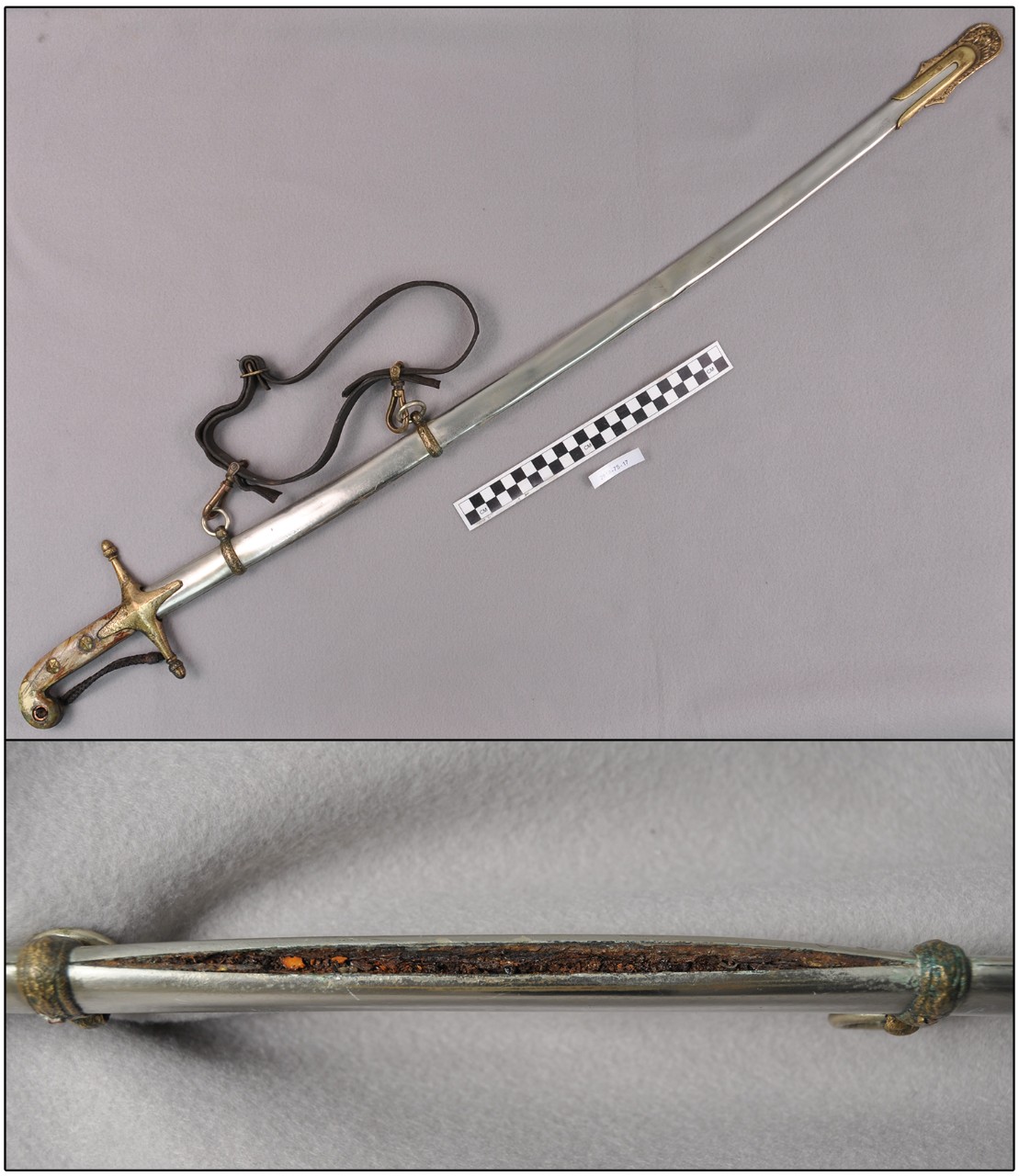
There are many possible further treatments after an artifact has been desalinated and fully cleaned. Some may include additional chemical treatment to arrest corrosion. If an artifact is chemically stable, but the surface is fragile, it may be coated with a consolidant, like specialized resins, to strengthen the surface. If there is loss of structural integrity, the object might need a physical structure built to help support its own weight. For wood artifacts, a bulking agent, such as a wax called polyethylene glycol (PEG), is introduced by immersion followed by freeze-drying to help the wood maintain structural stability. If this step is not taken, the wood can warp, shrink, and crack. Metal objects are often coated with a wax, such as microcrystalline wax, or other consolidant that provides a safe barrier to air, protecting it from conditions that might lead to new corrosion. It is important that consolidants and coatings are removable so that if further treatment is needed in the future, conservators can get back to the surviving original surface and start the new treatment with a clean slate.
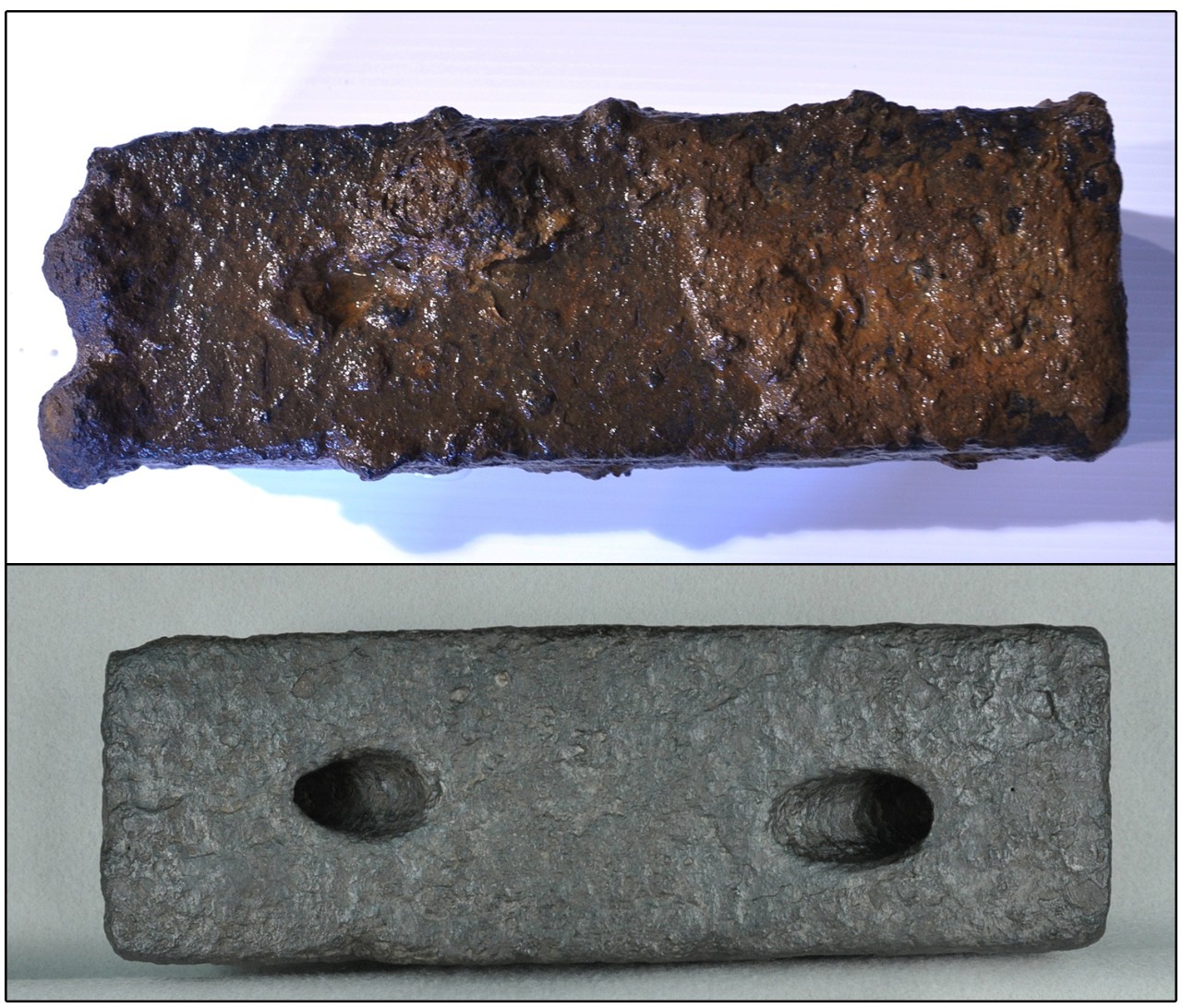
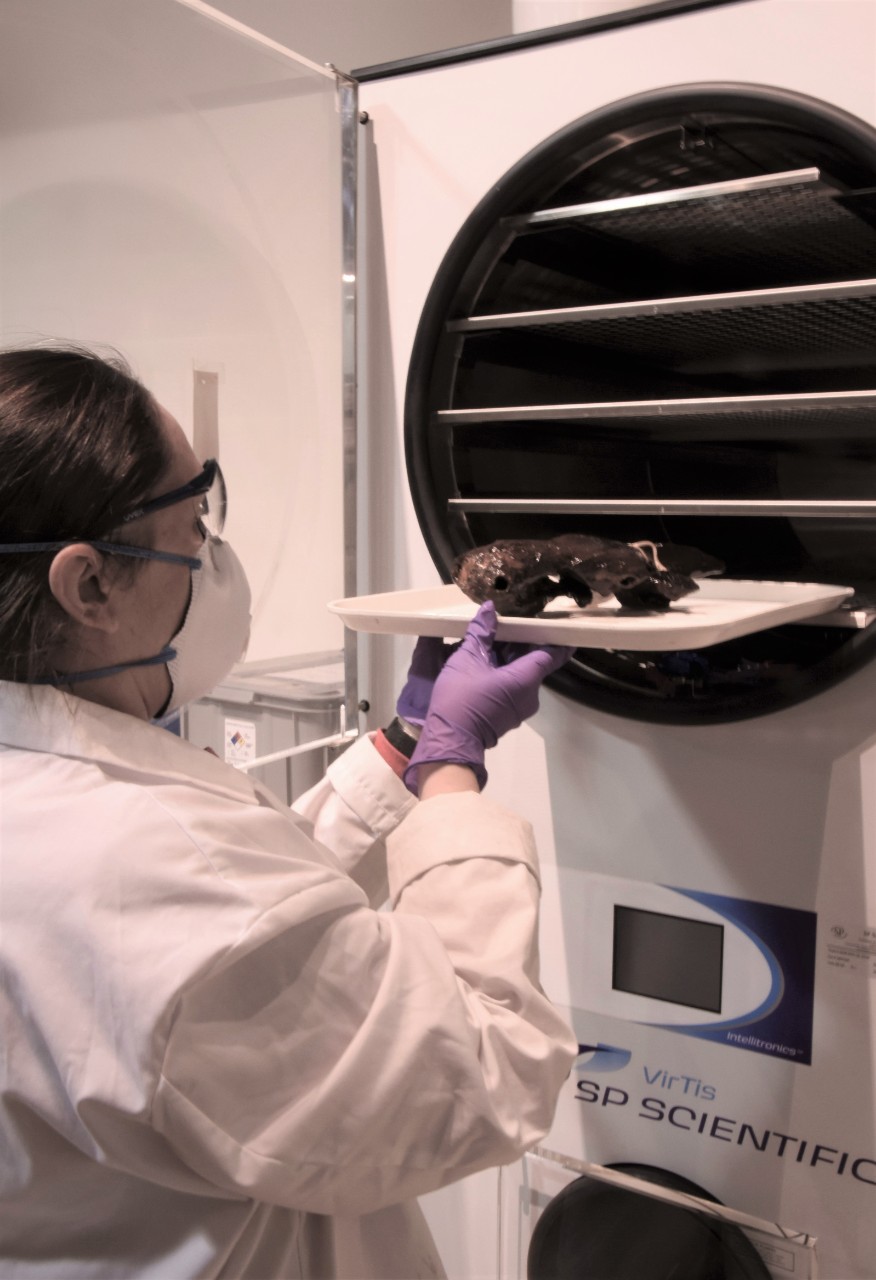
Preparing for Curation and Display
Once the conservation treatment is finished, a final round of scientific analysis, post-treatment documentation, photography, and at times 3-dimensional scanning is conducted. Then, the artifacts are placed in an archival box or bag with inert, pH-neutral padding, if needed, and stored in a stable and properly monitored environment. The long-term environment is important to keep in mind for preservation of archaeological artifacts. This includes relative humidity (RH), temperature, and lighting. Due to the fragility of these artifacts, control of the RH is crucial. Relative humidity tells us how much water vapor is in the air compared to how much it could hold. For example, RH at 75% means the air is holding ¾ of the water vapor it can hold. Many artifacts should be kept between 40 and 60% RH with a fluctuation of only +/- of 5%, unless it is made of iron and other metals where the RH can be 30% or lower. Higher RH can lead to new corrosion or swelling, while very low RH can cause warping, cracking, or flaking on non-metallic artifacts.
Temperatures can also effect the artifact. Higher temperatures can increase the possibility of chemical and biological (fungus, mold) activity. For curation spaces, the best range should be between 40 and 60 degrees Fahrenheit.
Many would not think lighting to be an issue, but control of ultraviolet (UV) radiation is necessary to protect the artifact from deterioration, especially if dyes or paints are visible. UV light is located on the shorter end of the spectrum and is not visible to the naked eye. The shorter wavelengths have much more energy and can produce unwanted reactions, which increase deterioration over time. It is best to ensure artifacts are stored in places that limit the exposure to light. For artifacts on display, a UV filter is usually placed on the windowpanes and display cases to reduce exposure.
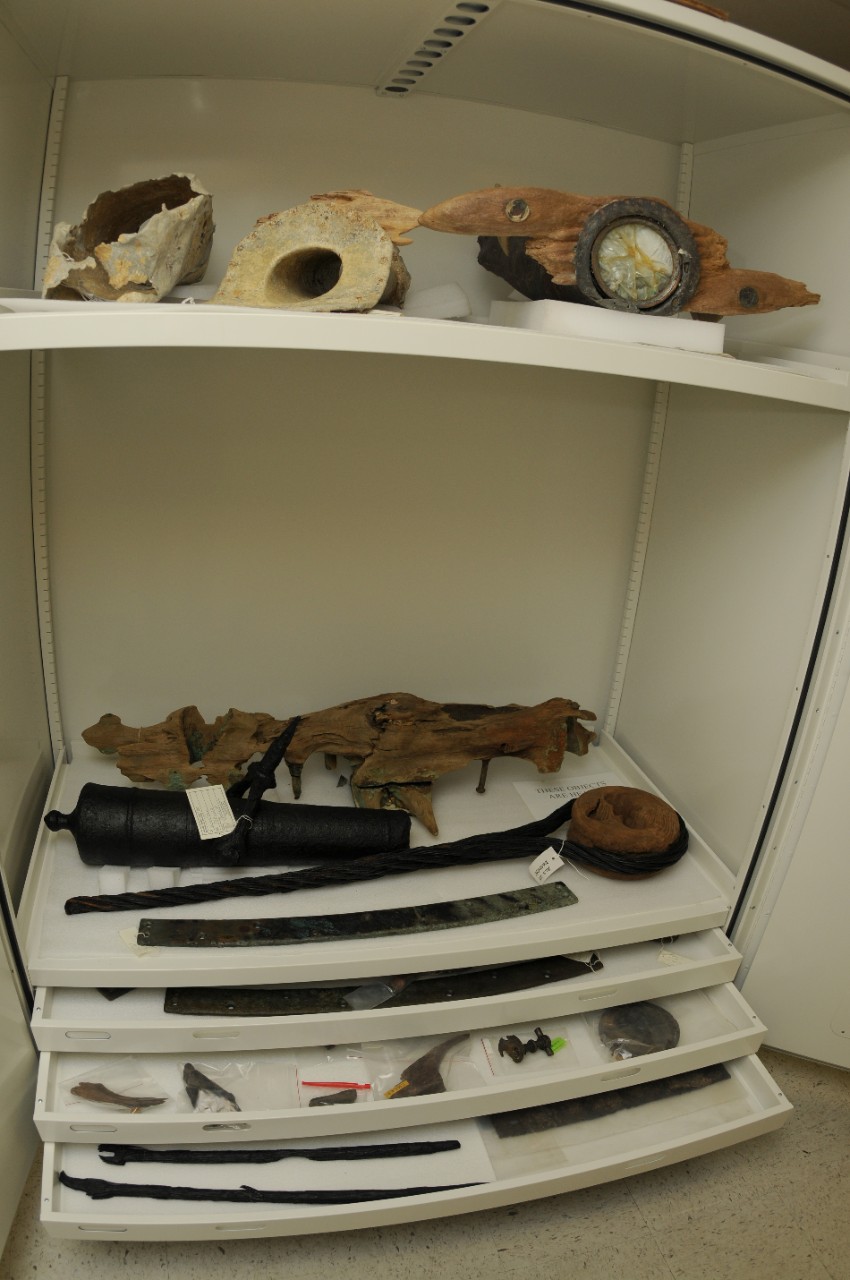
For federally owned archaeological material, the curation space or loan facility must meet certain standards established in 36 CFR 79. Archaeological material, from underwater or land sites, even after conservation treatment are more susceptible to renewed deterioration if its environmental surrounds are not monitored properly. The curation criteria ensures the artifact is placed in ideal conditions, like those mentioned above, for long-term preservation and responsible use of public funds. Conservation can be a very time-consuming and expensive endeavor, which is why artifact recovery should always be carefully considered, conservation fully funded, and a proper curation space identified before an excavation occurs either on land or underwater. The ultimate goal of conservation is to save and preserve artifacts for long-term study and public display.
Sharing the Artifacts
Public education, outreach, and academic research are key components in any archaeology program. As such, UA maintains a robust academic internship program, provides lectures and presentations, and archaeological publications. The UA ACL provides tours of the facilities, allows access to the archaeological artifact collection for researchers, and runs an extensive loan program, all of which allows Navy artifacts recovered from sunken and terrestrial military craft to be properly curated and available to the public. Currently, over 7,400 artifacts are on loan to qualified national and international museums and institutions, providing venues to make Navy’s incredible history come alive!
